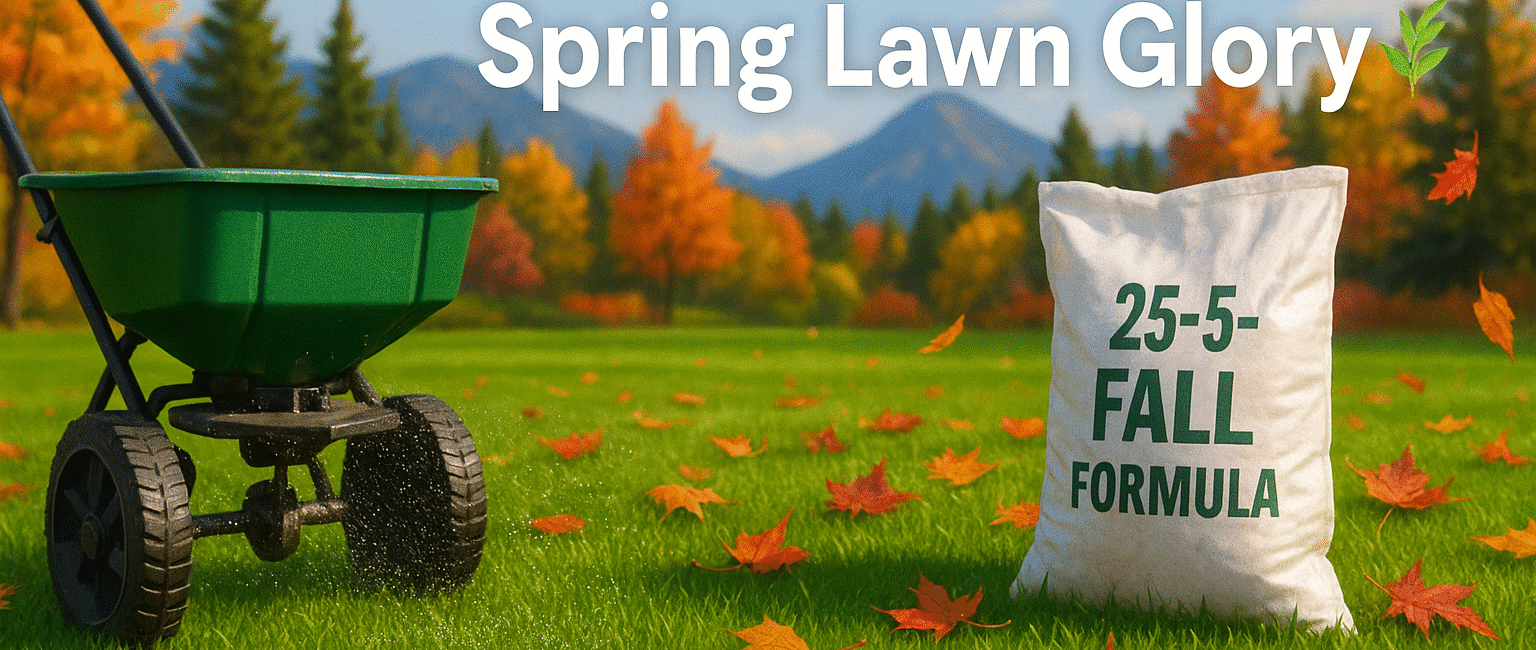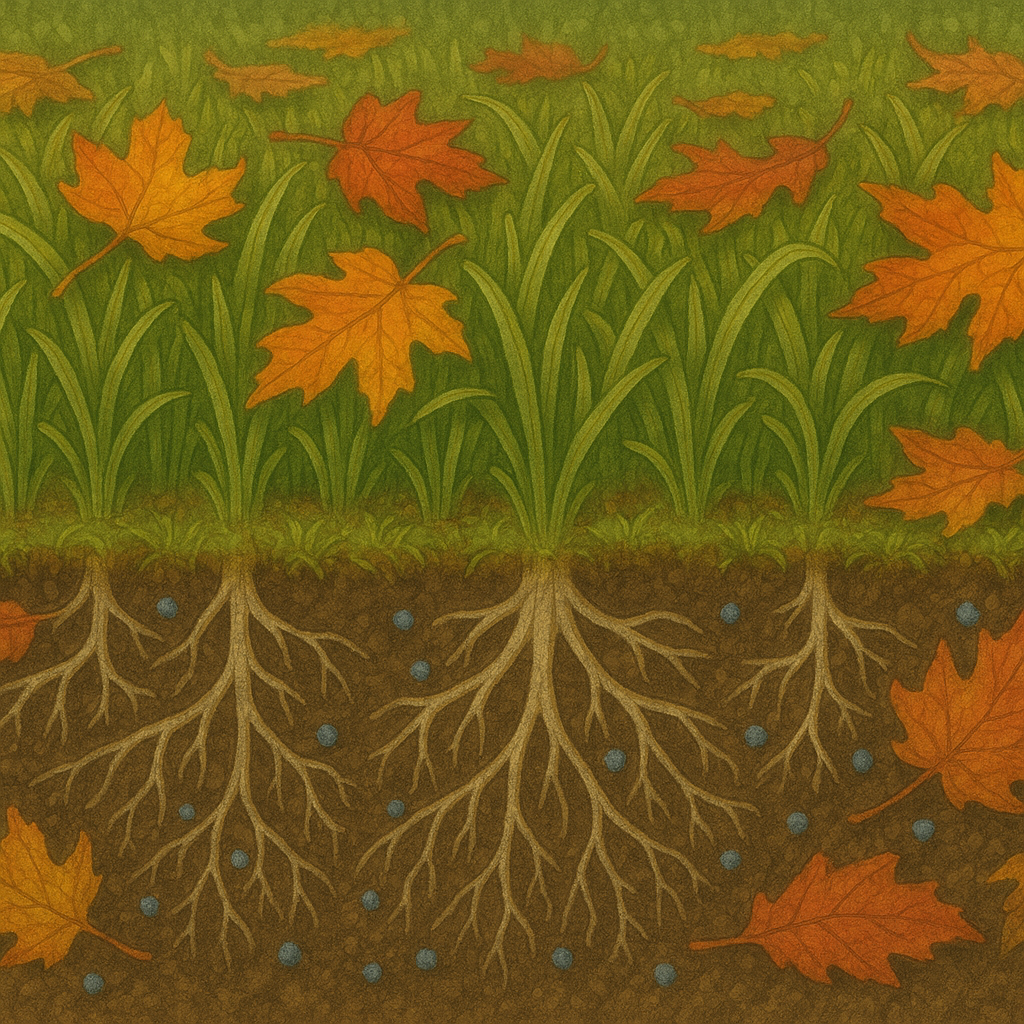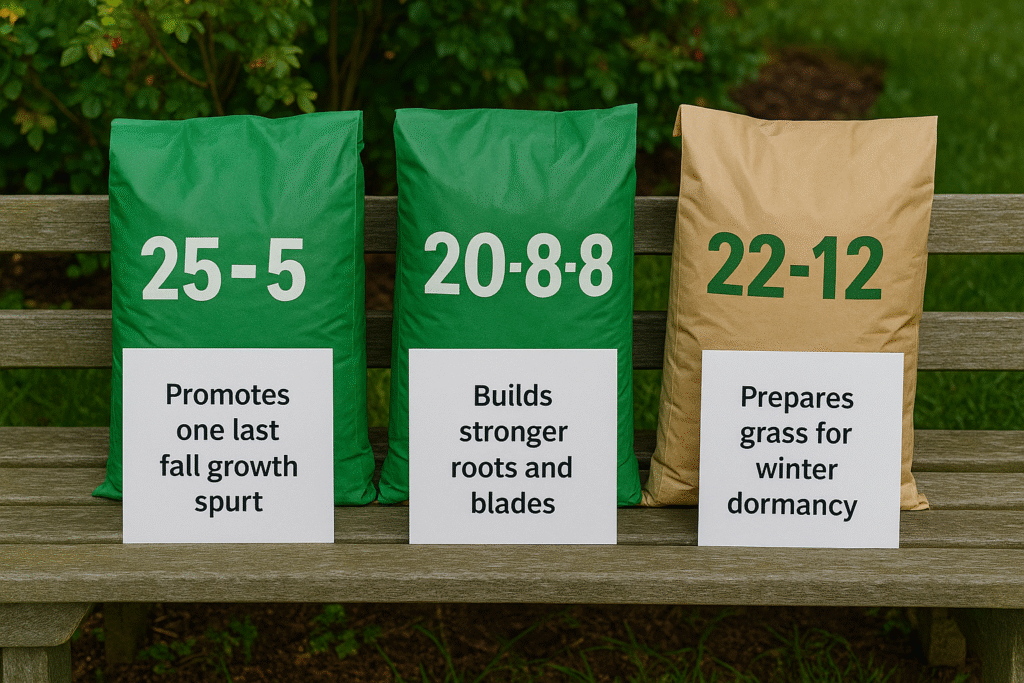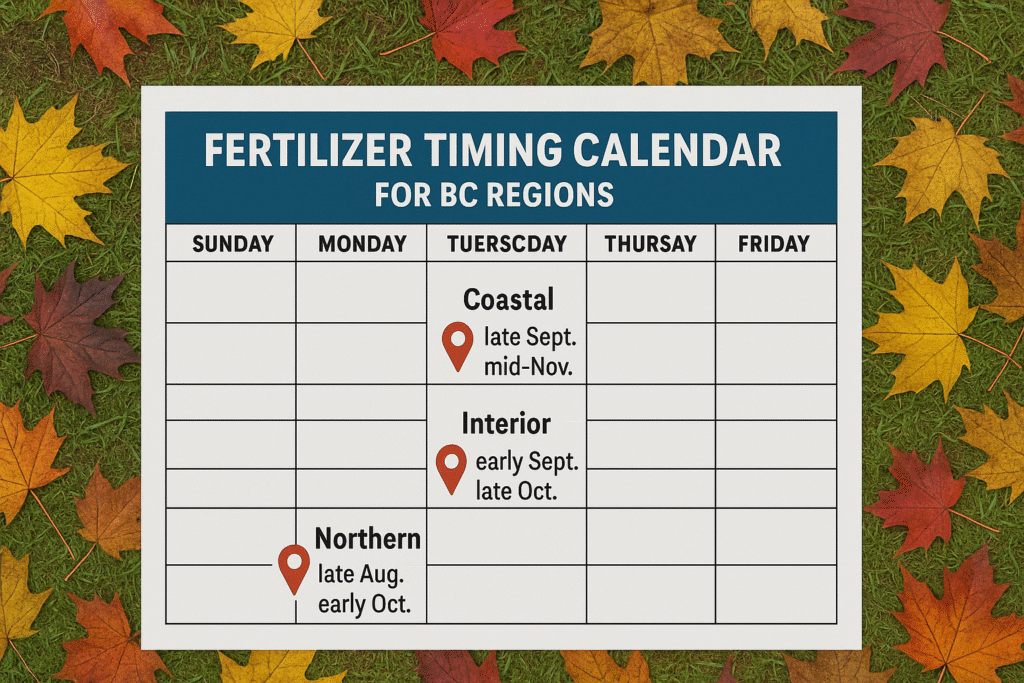
Fall is the MVP season for lawn care in British Columbia! While your neighbors might be winding down their yard work, savvy BC homeowners know that fall fertilizer application is the secret to achieving a gorgeous, resilient lawn that bounces back beautifully come spring.
Why Fall Fertilizing is Critical for BC Lawns 🌾
Your grass isn’t actually sleeping during BC’s wet winters—it’s in hibernation mode, storing nutrients and energy for next year’s growing season. Fall fertilizing prepares your lawn to cope with the harsh winters and ensures it comes back in full glory when spring arrives, making this timing absolutely essential for BC’s diverse climate zones.
The science is clear: Fall fertilizers support turfgrass in two ways. A well-planned lawn care package will contain two fall fertilizer applications. The first will stimulate the growth of new roots, while the second fall fertilizer (winterize) feeds essential nutrients to the roots. This dual approach sets your lawn up for success throughout BC’s challenging winter months.

The Perfect NPK Formula for BC Fall Fertilizing 📊
Primary Recommendation: 25-5-5 NPK Ratio
For most BC turfgrass, 25-5-5 formula fertilizers are often the best choice for the fall months, as you typically want a nitrogen-rich blend at this time. This high-nitrogen formula supports crucial root development while preparing your grass for dormancy.
Alternative Options:
- 20-8-8 Formula: 20-8-8 formulas can also work well if your grass growth the previous season wasn’t ideal and you feel your lawn may need some extra help growing
- 22-2-12 Mix: Fall & Winter fertilizer loses some Nitrogen content, and gains Potassium with fertilizer numbers that show “22-2-12”. This fertilizer helps to continue nourishing your lawn through the milder fall months and boosts its ability to stay strong

Understanding Your NPK Numbers 🔢
Nitrogen (N): Powers fall root growth and winter hardiness
Phosphorus (P): Phosphorus is critical in developing and strengthening a healthy root system of turfgrass
Potassium (K): Potassium is important to overall plant health. Potassium supports the internal process of the plant cells that affects photosynthesis, water absorption, respiration and protein production
Perfect Timing for BC Fall Fertilizer Application 🕒
Early Fall Application (September):
Apply your first round of fall fertilizer in early September when temperatures begin to drop but before the first frost sets in. This timing allows your grass to absorb nutrients while still actively growing.
Late Fall Application (October-November):
Your second application should happen 6-8 weeks after the first, typically in late October or early November. In the North, give grass a head start on strong root growth by using fall lawn food twice in the fall: once around Labor Day and a second time six to eight weeks later.
BC-Specific Timing Considerations:
- Coastal BC: Late September and mid-November
- Interior BC: Early September and late October
- Northern BC: Late August and early October

Best Practices for BC Fall Lawn Care 🌱
Before You Fertilize:
- Conduct a soil test to determine exact nutrient needs
- Remove fallen leaves to prevent grass suffocation
- Ensure grass blades are dry before application
- Check weather forecast – avoid fertilizing before heavy rains
Application Tips:
- Use a calibrated spreader for even distribution
- Water immediately after you apply fertilizer so it moves down to the roots
- Apply when temperatures are consistently between 15-25°C
- Never exceed recommended application rates
Seasonal Considerations for BC:
Apply a fall lawn fertilizer to help your grass build strong roots for the winter ahead. Look for a product with a higher potassium content, which aids in cold resistance and overall health. This is especially important given BC’s variable winter conditions.
Cool-Season Grass Specifics for BC 🌿
Most BC lawns feature cool-season grasses like:
- Kentucky Bluegrass
- Tall Fescue
- Fine Fescue
- Perennial Ryegrass
These grass types like it cool, they won’t grow as fast when temperatures go over 80 degrees F, making fall the ideal time for deep feeding and root development.
Provincial Regulations & Environmental Considerations 🌍
Before applying any fertilizer in BC, check local bylaws regarding phosphorus restrictions. Many BC municipalities limit phosphorus use to protect waterways. When in doubt, choose phosphorus-free formulations that focus on nitrogen and potassium.
Signs Your Fall Fertilizing is Working ✅
Watch for these positive indicators:
- Deeper green color before dormancy
- Improved spring green-up
- Better drought resistance next summer
- Fewer bare spots and weeds
- Thicker, more resilient turf
Ready to Transform Your BC Lawn? 🚀
Don’t leave your lawn’s health to chance! The task demands an in-depth understanding of your lawn’s needs, the local climate, and even regional restrictions.
Get matched with local BC lawn care experts who understand your specific regional needs. Visit BCServiceFinder.ca to connect with professionals who can create a customized fall fertilizing plan for your property. From soil testing to application timing, local experts ensure your lawn gets exactly what it needs to thrive through BC’s unique seasonal challenges.
Frequently Asked Questions 🤔
What’s the best fall fertilizer NPK ratio for BC lawns?
The ideal fall fertilizer for BC turfgrass typically features a 25-5-5 NPK ratio, providing high nitrogen for root development with moderate phosphorus and potassium. Alternative effective ratios include 20-8-8 for struggling lawns or 22-2-12 for enhanced winter hardiness.
When should I apply fall fertilizer in British Columbia?
Apply fall fertilizer twice in BC: first in early September when temperatures drop but before frost, then again 6-8 weeks later (late October/early November). Coastal areas can fertilize slightly later than interior regions due to milder conditions.
Can I use the same fertilizer formula across all BC regions?
While core NPK ratios work province-wide, timing and specific formulations should be adjusted for your region. Coastal BC has a longer application window, while northern BC requires earlier applications before harsh winter weather arrives.
How much fall fertilizer should I apply to my BC lawn?
Follow manufacturer instructions based on your lawn’s square footage, typically 1-2 pounds of nitrogen per 1,000 square feet annually. Never exceed recommended rates, as over-fertilizing can damage grass and violate local environmental regulations.
What happens if I skip fall fertilizing in BC?
Skipping fall fertilizer leaves your lawn vulnerable to winter damage, slower spring recovery, increased weed invasion, and reduced drought tolerance for the following summer. Fall feeding is considered the most critical fertilizer application of the year for BC’s climate.
🌟 Found this guide helpful? Please share it with your friends on Facebook so they can make better decisions when buying fall fertilizer for their BC lawns! A healthier lawn community starts with sharing knowledge. 🌟


